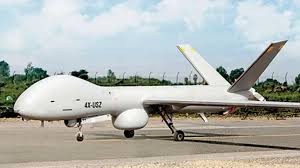 Image Source: raksha-anirveda
Image Source: raksha-anirveda
Drone technology is developing at breakneck speed in 2025, revolutionizing sectors from defense to agriculture and public safety. Recent expos and product rollouts indicate a surge in innovation with smarter, longer-range, and more capable drones making their presence felt in the market. The following are the major developments and trends accelerating this change.
Defense and National Security: India's Drone Innovation Landmark
Grand Showcase at Surya Drona Tech 2025
Surya Drona Tech 2025 in Dehradun spotlighted India’s rapid progress in indigenous drone and counter-drone technologies, aligning with the “Atmanirbhar Bharat” (self-reliance) initiative.
The event featured drones for high-altitude operations, intelligence, surveillance, reconnaissance (ISR), logistics, electronic warfare, and anti-drone solutions.
Live demonstrations included night-flying and thermal imaging, crucial for round-the-clock defense operations.
Cutting-Edge Indigenous Drones
Lightweight, 3D-printed surveillance drones controlled through VR were displayed, highlighting quick part replacement and simplicity of use-even by personnel with minimal training.
Indian Army and SIDM came together to encourage innovation and public interest, seeking to motivate the future generation of engineers and defense forces.
Strategic Objectives
The expo was designed to assess new drone systems, shortlist leading performing technologies for integration, and give concrete feedback to manufacturers.
Lessons from the event will inform future research, procurement guidelines, and readiness for operations.
Industry Trends: Smarter, Longer-Lasting Drones
AI-Powered Autonomy
Drones are now empowered with sophisticated artificial intelligence, supporting real-time decision-making, object identification, and predictive analytics for environmental shifts.
AI-powered flight controls enable drones to independently fly complex missions, detect obstacles, and process information in real-time-minimizing human intervention and error.
Extended Flight Times and Efficiency
Next-generation batteries and propulsion systems provide 20–30% increased flight duration, permitting drones to execute more challenging missions without repeated recharging.
Better energy management and cooling systems allow heavier payloads and reliable performance in adverse conditions.
Advanced Sensors and Payloads
Drones increasingly incorporate laser rangefinders, thermal imaging, and multi-spectral cameras, making them irreplaceable for precision mapping, infrastructure inspection, and emergency response.
Low-light obstacle detection and modular payloads enhance safety and versatility in varied applications.
Industry News: Product Releases and Research Advances
Era's End and New Dawn
DJI formally retired its legendary Phantom 4 line, signaling a move towards newer and more sophisticated drone models.
SiFly launched the Q250 and Q12, and rumors regarding the new DJI Mavic 4 promise innovations such as a vertical-screen controller.
Bio-Inspired Drone Designs
Scientists in South Korea introduced a "flying squirrel" unmanned aerial vehicle with folding wings, providing increased agility and sudden deceleration-potentially changing the way drones navigate through difficult terrain.
Broader Impact: Beyond Defense
Civilian and Commercial Applications
Unmanned aerial vehicles are revolutionizing agriculture with autonomous crop monitoring and treatment, improving disaster response, and making infrastructure inspections easier.
Public safety agencies gain from increased endurance, real-time data analysis, and instant deployment of drones.
Conclusion
2025 is a milestone year for drone technology, with advancements in AI, flight time, and sensor fusion driving drones into new levels of capability. From defense to routine industry, these technologies hold the promise of safer, smarter, and more efficient operations-a new age in unmanned aerial systems.
Sources: Indian Defence News, UAS News Update, Blue Skies Drone Shop, DSLRPros
Advertisement
Advertisement



